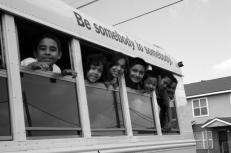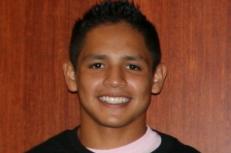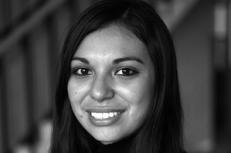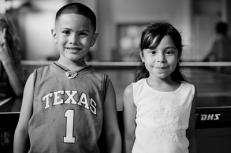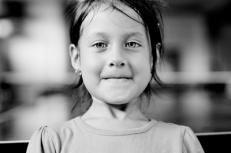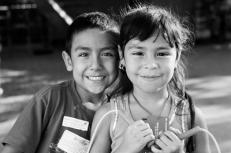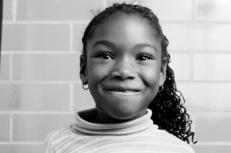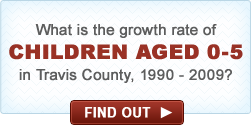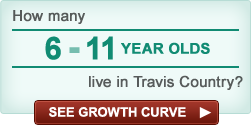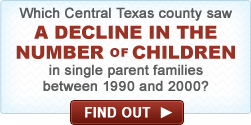Forefront Editor (FF): We're here today to discuss Generation Z.
Mark Kiester (MK): It's like generational alphabet soup. Where are demographers going after they finish the alphabet?
FF: Generation Z are kids born from the late 1990's through today—essentially babies through 11 or 12 year-olds. I’m not sure where the cut-off is going to be, but I believe the demographers are considering the next generation to be the Alpha Generation.
MK: Okay. These are the kids we are serving today through our clubs. We serve kids from elementary school through high school in 15 clubs throughout the Austin area.
FF: Demographers are looking closely at Generation Z, from their characteristics to their size. These are kids who know nothing but technology, have been acculturated in a post-9/11 world and are coming of age at a time of tremendous globalization.
MK: And they can teach me how to work an iPhone.
FF: Beyond the social characteristics, though, the mushrooming size of Generation Z is going to be an almost unstoppable force in shaping our communities. The statewide population has grown almost 19 percent since 2000 , with more than half of that growth coming from the birth rate. And within that increase, we're seeing a higher proportion of children living in poverty, as well as an increase in the percentage of Hispanic children born in the United States.
MK: We are seeing the effects of that growth in real time in our clubs. We are serving more Hispanic children and more of our children are receiving free and reduced-cost lunches. In 2008, within our clubs, 57.6 percent were from single-parent households, 78.4 percent received free or reduced-cost lunches and the clubs were 24 to 82 percent Hispanic. In 2010, 58 percent of our kids were from single-parent households, 88 percent received free or reduced-cost lunches and 29 to 82 percent were Hispanic.
FF: Does that affect the programs you offer?
MK: Programmatically, we have a proven model that works for any child, but is specifically designed for lower-income kids who are at risk of dropping out of high school.
Our challenge is how to increase the availability and presence of our clubs and programs to meet the demand posed by Generation Z.
In just the past few years, we've gone from 44,000 to 53,000 kids living in poverty in Travis County alone. Today, BGCAA serves about ten percent of the children living in poverty. Our goal is to double the number of kids we serve from 10,000 to 20,000. But even as we do that, we'll still be serving only ten percent of children in poverty because the total number will keep increasing.
FF: What is driving this increase in poverty?
MK: The question that keeps occurring to me is: "How many lower- income workers does it take to serve software engineers?" Travis County is becoming poor very rapidly, which seems at odds with what we are seeing in the media about new jobs at Apple, Google, Facebook, engineers. As those jobs grow, we need lower-wage service workers. But, as the cost of living increases, their wages are not keeping pace with what people need to get by. So the working poor may be increasing even more quickly than any other segment of the economic sphere.
FF: But it's not just a size element—there are also geographic forces at work. Families with children are moving away from the urban core very rapidly.
MK: Absolutely. The population is moving in and out of Austin and neighborhoods are changing. African-American families have realized improvements in education and affluence and are migrating into suburbs in Round Rock, Cedar Park and other middle-class suburbs. Within Austin, some neighborhoods that were traditionally more Hispanic, right off the I-35 corridor, have been gentrified by Generation Y. Those original populations are moving to other neighborhoods out of the urban core.
You can see this phenomenon in action in the Anderson Mill Limited District (AMLD) in Northwest Austin, where demographic shifts are occurring at an incredibly fast pace. The Census Bureau forecasts that the percentage of Hispanic households will increase from 10.3 percent to 14.5 percent--an increase of 41 percent--in the next five years.
FF: And what impact is that having on the community?
MK: AMLD is a tight-knit neighborhood with a strong history of vibrant parks and recreational activities that bring the whole community together. In recent decades, the neighborhood has trended older, but now, with an influx of new children, the services aren't necessarily keeping pace.
The Board is actively working to get out in front of the changes they are experiencing, to ensure their offerings meet the needs of the new community. They asked us to see if we could start a club there to address the needs of their younger population. We're still trying to work out the details, but it's a cue for where and how our services will need to grow.
FF: What are some other approaches that are working to accommodate the ways Generation Z is changing Austin?
MK: We're seeing this population increase at the same time that public institutions are under great stress. I don't believe that public education or social services are completely broken, but they definitely need help.
We're seeing some great success with public-private partnerships, such as the one we are working on in AMLD, to help us meet the growing demands of Generation Z. Charter schools, such as the one started at Southwest Key, are demonstrating that smaller, more nimble programs give teachers leeway to address problems creatively.
We've got to be increasingly creative to find ways to address these demands.
FF: What’s the implication of not addressing the demands?
MK: On a very basic level, we have an obligation to avail ourselves of every resource we can get our hands on. If we don’t develop our children, we'll burden our social services network down the road. We know that an undereducated workforce places a stronger demand on social services, has a greater proclivity towards the criminal justice system, is not as healthy ... and the list goes on.
With the pace of growth we’re facing, it's a burden we may not be able to overcome if we don't put these kids into an environment that nurtures their capacities from the start.
FF: So Generation Z is already making waves and some are still in diapers?
MK: The reality is, it doesn't matter what we call the generations. There are two reasons why kids don't succeed in school that are the same, generation after generation:
- 1. They are not attached to their high school. Without this sense of belonging, they are alienated and don't have the drive to succeed.
- 2. The kids get behind in classes and just can't catch up. Our programs give kids the sense of belonging to the club and provide skills that they can transfer to other institutions as they grow. It's our intention that these tools can stop the cycle of poverty from jumping to the next generation.
FF: So Generation Z can keep poverty from continuing on to Generation Alpha?
MK: That's the hope. There is going to be a separate track in every generation that will always be poor—and of course, it's never a kid's fault.
But unless there are organizations that are intervening to move kids out of the separate poverty track, we'll just move poverty down the generation trail. Boys & Girls Clubs are that intervener for our kids. We are giving them the decision-making and healthy lifestyle skill sets to make good decisions about their lives. It’s our goal for each of them to have the wherewithal to be a married parent of children, to provide the family support they need.





